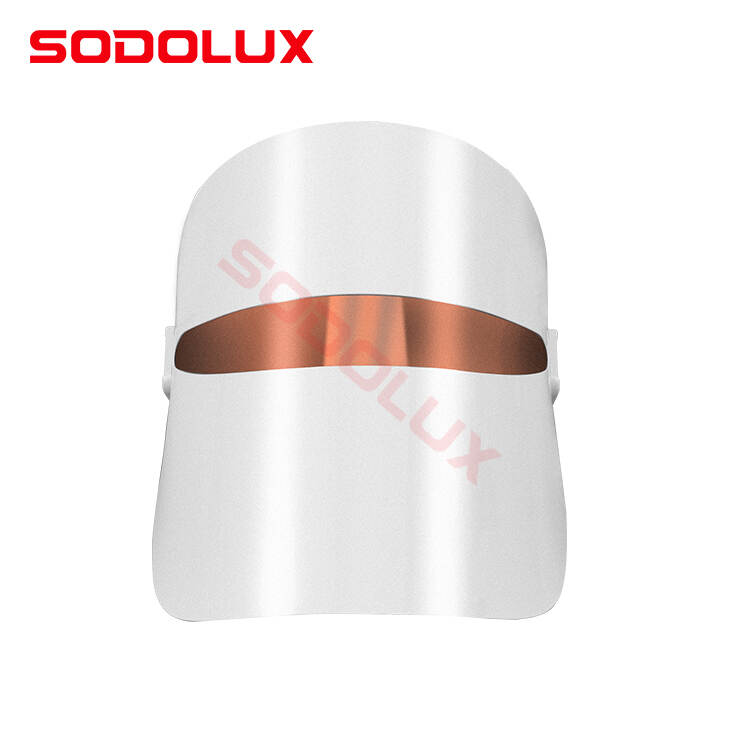In the ever-evolving universe of skincare, the emergence of LED face masks is akin to discovering a hidden galaxy, vast and intriguing, promising celestial wonders for our skin. As their luminescence beckons, many individuals find themselves pondering a critical question: can these vibrant shields of light be safely used on sensitive skin? Delving into this topic offers a glimpse into the intricate interplay between technology and biology, shedding light on the unique properties of these masks and the skin’s responses.
To understand the suitability of LED face masks for sensitive skin, it is imperative to first explore what sensitivity in skin truly entails. Sensitive skin is often a delicate tapestry, woven with threads of fine texture and vulnerability, reacting to environmental stimuli, products, and even emotional states. This heightened reactivity can manifest through redness, irritation, and discomfort, which can make the pursuit of effective skincare a challenging journey. Thus, when contemplating the use of LED technology, it’s crucial to navigate this territory with both curiosity and caution.
LED face masks operate on fundamental principles of light therapy, harnessing various wavelengths to target specific skin concerns. From soothing redness with gentle red light to banishing blemishes with the assertive pulse of blue light, these devices promise an arsenal of benefits that feel almost alchemical. However, for sensitive skin types, it is vital to discern which wavelengths are beneficial and which might incite irritation. This is where the nuances of LED therapy become paramount.
Red light therapy, for instance, serves as a nurturing embrace for sensitive skin. Its longer wavelengths penetrate deeply, promoting collagen production and enhancing skin healing — akin to sunlight breaking through a gloomy sky after a tempest. This gentle yet effective method may alleviate inflammation and bolster the skin’s natural defenses. When using such masks, individuals with sensitive skin often report an ephemeral sensation of warmth, a testament to the therapy’s gentle caress rather than an aggressive assault on delicate tissues.
The blue light spectrum, on the other hand, while potent in its antibacterial prowess—targeting acne-causing bacteria—can be a double-edged sword. For those with particularly reactive skin, the intensity of blue light may elicit redness or exacerbate pre-existing conditions. The disparity in individual responses underscores the need for a personalized approach to skincare and a trial-and-error methodology when integrating new technologies.
In the realm of LED masks, the stronger the light, the greater the potential for both awe and disarray. Individuals embarking on their LED journey should adhere to a few golden rules. Begin with shorter sessions of just a few minutes, allowing the skin to acclimatize to the treatment. This initial foray should feel more akin to basking in a gentle sunrise rather than being thrust into a midday solar glare. Patience, much like a gardener tending to delicate seedlings, will yield the most bountiful results.
Hydration plays a critical role in this process. Before donning the mask, ensuring that the skin is well-moisturized will create a protective barrier, allowing the light to work its magic without overwhelming the skin. Employing hyaluronic acid or soothing gels can provide that extra cushion, much like a soft quilt enveloping body and soul. This practice not only prepares the skin for treatment but enhances the effectiveness of the LED light, encouraging harmonious integration of technology and biology.
Further, one must consider the importance of ingredients in conjunction with LED therapy. As sensitive skin bears its own unique attributes, combining LED masks with harsh exfoliants or potent actives may cause friction that leads to discomfort or exacerbation of symptoms. Instead, when synchronizing routines, opt for calming botanicals, harnessing the serenity of nature to accompany the innovative brilliance of LED technology. Ingredients such as chamomile, aloe vera, and calendula align beautifully, exhibiting synergistic effects that soothe while the light rejuvenates.
Yet, despite the advantages, it’s essential to heed potential pitfalls. Many individuals fall prey to overenthusiasm, believing that frequency equates to better results. However, for sensitive skin, moderation is crucial. Utilizing LED masks two to three times a week can create a rhythm, allowing the skin to revel in the benefits without becoming overwhelmed. This gentle cadence provides a reliable routine that fosters resilience, helping sensitive skin navigate the complexities of modern environmental stressors.
Moreover, the realm of LED therapy offers a transformative experience that transcends mere physical benefits. Engaging with such masks often becomes a meditative ritual, akin to stepping into a serene landscape. The ritual of applying the mask becomes a moment of self-care, a much-needed pause in a frenetic world. This intersection of technology and mindfulness is perhaps one of the most appealing aspects of LED therapy, especially for those managing sensitive skin. It invites an intimate dialogue between self and skin, promoting a deeper understanding and appreciation of one’s unique dermal landscape.
In conclusion, while the question of whether LED face masks are suitable for sensitive skin is layered and complex, the nuanced understanding of light therapy reveals rich potential for transformation. With gentle wavelengths and a mindful approach, individuals can navigate the sparkling universe of LED masks securely. As technology advances, the prospects for effective and personalized skincare continue to unfold, illuminating paths previously shrouded in ambiguity. Ultimately, this confluence of science and self-care may just be the guiding light sensitive skin has been yearning for, opening new horizons in the quest for radiant health and beauty.
